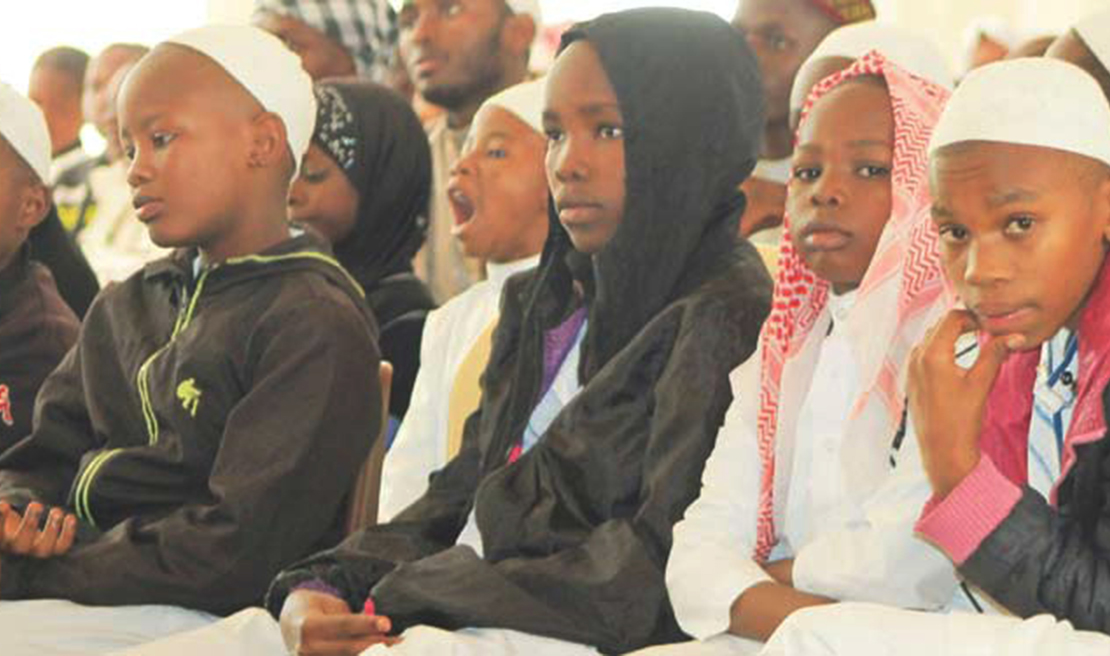In the second of a four-part series, Iddi Musyemi looks into the process of developing a standard Madrassa curriculum with the backing of the Muslim Education Council
The development of a single madrassa curriculum that will be used by all Muslim religious institutions is in its last stages.
The process which started back in 2014 brought Muslims together to contribute in the making of a curriculum that would be used by all madrassa schools in the country in line with the government’s requirement after the recognition of Islamic system of education.
The curriculum, dubbed Kenya National Madrassa Curriculum (KNMC), was developed under the aegis of the Muslim Education Council (MEC).
“We had several meetings all over the country, we visited all the regions of Kenya and met the stakeholders, took their recommendations and suggestions and we shared the copy of the draft curriculum with them,” says sheikh Munawar Khan, the chief executive officer of MEC.
For KNMC to be used in the country first it has to be approved by the Kenya Institute of Curriculum Development (KICD), a government agency that approves all the curriculums used by the learning institutions that fall under the Basic Education Act.
“A good curriculum has to take into consideration the needs of the society,” says Shurie Abdi who is the Chief Curriculum Developer with KICD. Using the example of the Madrassa institutions, Shurie says the curriculum will have to consider what type of people the Muslim society wants and then put in appropriate content and time necessary for getting these graduates.
“If it is an Imam that Muslims want, what type of Imam is it that they want?”
The developed madrassa curriculum however seeks to go beyond religious scope by including regular subjects in madrassa schools time table.
“We want to bring all learning together under one roof,” says Ahmed Yussufu, a member of MEC and the chairman of the task force that is leading in development of madrassa curriculum.
“KNMC will include both secular and Madrassa subjects because the students who graduate from the madrassa system should be able to proceed to regular system if their parents wish that.”
The recognition of madrassa schools was welcomed by Muslim community in the country, but for the recognition to be implemented Muslims will have to take their own initiatives as these religious schools are still considered to be private institutions.
“We should not expect that the government is going to put money in madrassa schools,” says Sheikh Ibrahim Lethome. “Even though they are now recognized by government as formal institutions of learning, madrassa schools still remain private institutions.”
If the proposed curriculum will be implemented, it will major shift in how madrassa schools are run starting as it will formalize many things that Muslims have for long assumed to be non-issues thereby inconveniencing the learners.
“If you go in Muslim neighbourhoods you will find two madrassa schools in the same area but each one is teaching in its own way because they don’t have a source reference of what they are supposed to teach,” says Yussufu. “Most madrassas don’t have a curriculum.”
This method of operation inconveniences the whole learning system as teachers, students and parent are affected in one way or the other.
“If a student transfers from one madrassa to another there is no system of knowing which class to put him or her into,” says Abu Hamza of Madrassatul Ulum based in Kibra. “What madrassa teachers do is estimate where a student falls within their system of learning and then put the student in that class.”
This lack of a standard measure of assessing what class a student belongs in wastes a lot of time for the students, argues Abu Hamza.
“If a student coming from another madrassa were in class five there, at our madrassa he might find himself being taken back to class four or three in our system because we might feel that what he has learned is not enough and he has to repeat,” says Ustadh Khalid Mainallah of madrassatul Nur Riruta.
A single curriculum will be able to sort this mismatch and help students and madrassa operators run the activities smoothly.
Another thing is the recognition of madrassa certificates which hitherto have not be very useful for madrassa graduates.
Shurie says the curriculum will help in the recognition of madrassa certificates and allow students who hold such certificates to benefit with jobs and other opportunities.
“A student who has done Arabic in secondary school is recognized by government because the system under which he studied is recognized too, but a madrassa student at the same level is not recognized just because the system in which he studied was not recognized,” says Shurie.
“The curriculum will come in handy in the recognition of madrassa graduates.”
While all Muslims agree that there must be a single curriculum for madrassa schools, the born of contention has been the content that will be taught.
In subjects like Tauhid and Fiqh, some madrassa teachers propose that they should be opened according to the beliefs of individuals as these subjects are interpreted differently by different groups of Muslims.
“We should not be forced to teach what we don’t believe just because there’s a curriculum,” says Ustadh Issa Musa of madrassatul Riyadha based in Kibra. “If this were to happen then most of madrassa operators might be forced to rebel and thereby defeat the purpose of a single curriculum.”
Madrassa schools have been advised to start using the already developed curriculum with the purpose of assessing its suitability.
Ahmed Yussufu says that MEC could even start making arrangements to recognize students from madrassas which implement the Kenya National Madrassa Curriculum even as it undergoes government’s scrutiny at KICD.
“What we need is feedback from madrassa operators and students,” he says. “We need to know what we should add or remove so that we have an appropriate curriculum that suits all.”

